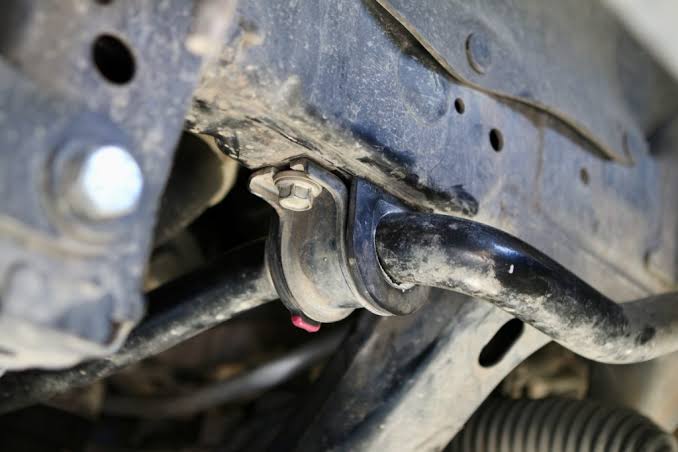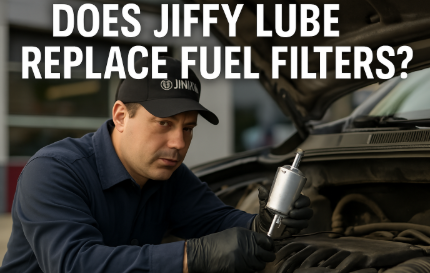In the intricate world of automotive engineering, every component plays a crucial role in ensuring a smooth and stable ride. Among these components, the stabilizer bar bushings might not grab the spotlight, but their importance in maintaining vehicle stability and handling cannot be overstated. In this blog, we’ll delve into everything you need to know about stabilizer bar bushings, including their function, types, maintenance tips, common issues, and replacement guidelines, ensuring your vehicle stays steady on the road.
Understanding Stabilizer Bar Bushings
Function:
Stabilizer bar bushings, also known as sway bar bushings or anti-roll bar bushings, are small yet critical components located at the connection points between the stabilizer bar (or sway bar) and the vehicle’s chassis. Their primary function is to secure the stabilizer bar in place and isolate it from the chassis, reducing noise, vibration, and harshness (NVH) and allowing the bar to pivot freely during suspension movement.
Components:
Stabilizer bar bushings are typically made of rubber or polyurethane material, chosen for their flexibility, durability, and ability to absorb shocks and vibrations. They feature a cylindrical or spherical shape with an inner sleeve or metal insert to provide support and prevent deformation under load.
Types of Stabilizer Bar Bushings
Rubber Bushings:
Rubber stabilizer bar bushings are the most common type found in vehicles, offering good vibration isolation and noise reduction properties. They are affordable, easy to install, and suitable for most driving conditions.
Polyurethane Bushings:
Polyurethane stabilizer bar bushings offer improved performance and durability compared to rubber bushings. They provide better resistance to deformation, heat, and wear, resulting in enhanced stability, responsiveness, and longevity. However, they may transmit more road noise and vibrations to the vehicle’s cabin.
Common Issues with Stabilizer Bar Bushings
Wear and Deterioration:
Over time, stabilizer bar bushings can deteriorate due to exposure to heat, oil, road salt, and environmental factors. This can lead to cracking, hardening, or crumbling of the rubber material, compromising their ability to secure the stabilizer bar and absorb vibrations.
Noise and Vibration:
Worn or damaged stabilizer bar bushings can result in increased noise, vibration, and harshness (NVH) during driving. You may notice clunking or knocking sounds when going over bumps or uneven road surfaces, indicating excessive play or movement in the stabilizer bar.
Handling and Stability Issues:
Faulty stabilizer bar bushings can affect vehicle handling and stability, especially during cornering or abrupt maneuvers. You may experience body roll, excessive sway, or loss of control, particularly at higher speeds or when carrying heavy loads.
Maintenance Tips for Stabilizer Bar Bushings
Regular Inspections:
Inspect the stabilizer bar bushings regularly for signs of wear, damage, or deterioration. Look for cracks, tears, or deformation in the rubber material, as well as loose or corroded mounting hardware.
Lubrication:
Apply silicone or polyurethane lubricant to the stabilizer bar bushings as needed to prevent squeaks, creaks, or binding. Lubrication helps reduce friction and wear, allowing the bushings to move freely and absorb vibrations effectively.
Replacement:
Replace worn or damaged stabilizer bar bushings promptly to restore vehicle stability and handling. Choose high-quality replacement bushings made of rubber or polyurethane material, designed to withstand the rigors of daily driving and provide long-lasting performance.
Replacement Guidelines for Stabilizer Bar Bushings
Signs for Replacement:
Replace the stabilizer bar bushings if you notice any of the following signs:
- Excessive noise, vibration, or harshness (NVH) during driving
- Clunking or knocking sounds when going over bumps or rough roads
- Handling or stability issues, such as body roll or excessive sway
Replacement Procedure:
- Raise and Support the Vehicle: Lift the vehicle using a jack and support it securely with jack stands. Ensure the vehicle is stable and level before proceeding with the replacement.
- Locate the Stabilizer Bar Bushings: Identify the stabilizer bar bushings located at the connection points between the stabilizer bar and the vehicle’s chassis. They may be accessible from underneath the vehicle or through the engine bay.
- Remove the Old Bushings: Use a combination of hand tools, such as wrenches, sockets, and pliers, to remove the old stabilizer bar bushings and mounting hardware. Take note of the bushing orientation and placement for proper installation of the new bushings.
- Install the New Bushings: Install the new stabilizer bar bushings into the mounting brackets or arms, ensuring they are aligned properly with the stabilizer bar and chassis. Use new mounting hardware if necessary, and tighten the bolts or nuts securely to the manufacturer’s specifications.
- Test and Inspect: Lower the vehicle and test-drive it to ensure proper installation and alignment of the new stabilizer bar bushings. Check for any signs of noise, vibration, or handling issues, and inspect the bushings for proper fit and function.
Conclusion
Stabilizer bar bushings may be small in size, but their impact on vehicle stability and handling is significant. By understanding their function, recognizing common issues, following proper maintenance tips, and knowing when to replace them, you can ensure that your vehicle stays steady on the road and delivers a smooth and comfortable driving experience. Regular inspections, lubrication, and timely replacement of worn or damaged stabilizer bar bushings are essential steps in maintaining vehicle safety, stability, and performance for miles to come.
Share this content:



